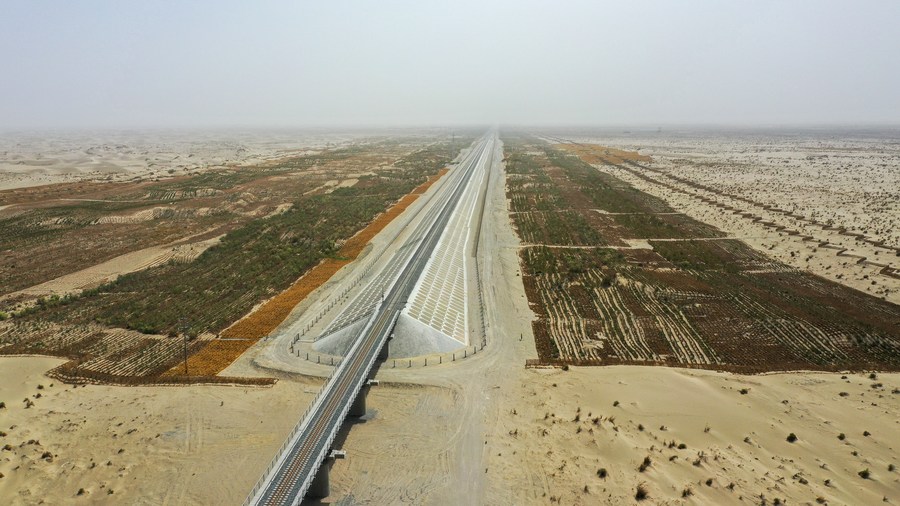
With the very first train roaring northeastward from Hotan, northwest China's Xinjiang Uygur Autonomous Region, the Hotan-Ruoqiang railway was formally put into operation Thursday. It also marks the inauguration of the world's first desert rail loop line.

The first train of the Hotan-Ruoqiang Railway pulls out of Hotan Railway Station in Hotan, northwest China's Xinjiang Uygur Autonomous Region, June 16, 2022. (Xinhua/Ding Lei)
The 2,712-km loop, encircling the Taklimakan, China's largest desert, and linking major cities including Aksu, Kashgar, Hotan, and Korla along its route, is expected to put the development of Xinjiang, especially its southern part, on a faster track.
LAST PIECE OF THE PUZZLE
The Taklimakan Desert rail loop line was completed after the new Hotan-Ruoqiang rail line was linked with the Ruoqiang-Korla section of the Golmud-Korla railway line, and the Korla-Kashgar and Kashgar-Hotan sections of the southern Xinjiang rail line.
The Hotan-Ruoqiang railroad stretches eastward from Hotan City to Ruoqiang County along the southern edge of the Taklimakan, the world's second-largest shifting-sand desert, with 65 percent of its length inside the desert. Its construction started in December 2018.
The newly opened line extends 825 km with a speed of 120 km per hour, and it has 22 stations, with 11 offering passenger service and six offering cargo service. Trains can cover the entire distance in 11 hours and 26 minutes.
The railway line runs through the southern edge of the Taklimakan Desert, and sandstorms in this region pose a serious threat to the railway. Anti-desertification programs were carried out simultaneously with railway construction, said Wang Jinzhong, Party chief of the construction contractor of the Hotan-Ruoqiang railway.

Aerial photo taken on May 19, 2022 shows the windbreaks along the Hotan-Ruoqiang Railway in northwest China's Xinjiang Uygur Autonomous Region. (Xinhua/Ding Lei)
Five viaducts with a total length of 49.7 km lift the railroad to protect it against sandstorms. Meanwhile, a total of 50 million square meters of grass grids have been laid and 13 million trees, including rose willow and sea buckthorn, have been planted.
The green barrier of shrubs and trees not only guarantees the safe passage of the trains but also helps improve the local ecological system, Wang added.